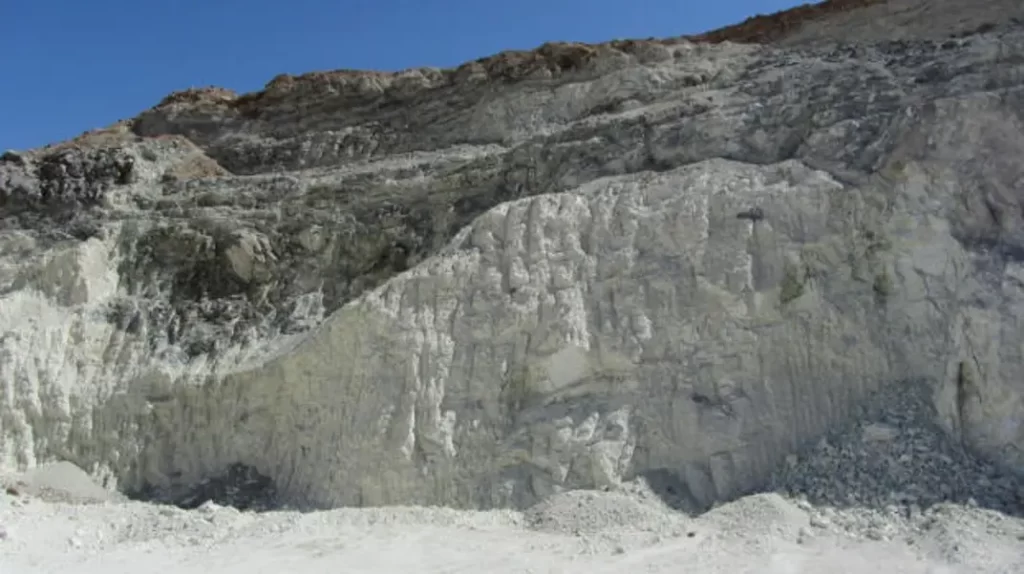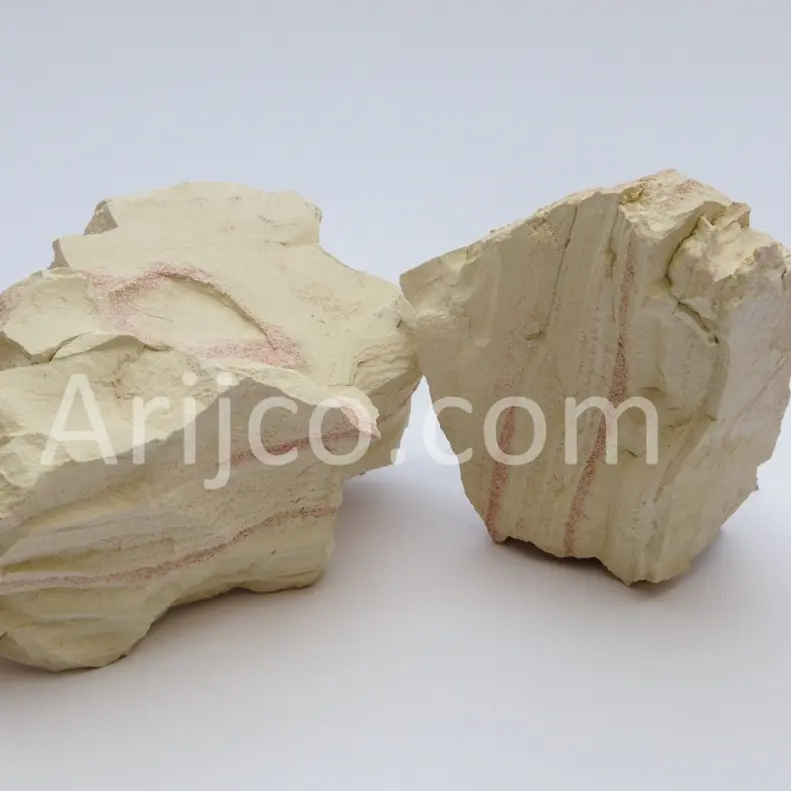Bentonite is an industrial rock that occurs naturally, identified by the feature of water-absorbing and by the capacity for Base Exchange; both features are considerably greater than that of kaolin and plastic clays. In some bentonites, water absorption is supplemented by a significant increase in volume, size, and formation of gelatinous mass.
Bentonite is processed to provide calcium and sodium montmorillonite, organoclays, and activated clays, all of which have different characteristics that can be used in a wide range of applications. Pelletizing, Foundry, civil engineering, construction, environmental markets, oils and food markets, drilling, agriculture, cosmetics, pharmacy and medical markets, detergents, dyes and polishes, paints, cat litter, ceramics, paper, and catalysts are applications and uses stated by European Bentonite Association.
Certain use of bentonite, where the absorbing feature is employed to give waterproof sealing, is for an underground repository in granites. In the repository, compressed bentonite is employed in the buffer zone, which is considered to restraint radioactive materials throughout the long time period, as a shield against minor rock movements, resistant barrier to the mass carrying by groundwater, protection of retardation capacity, and chemical buffering, conveyance of heat from the radioactive canister to the nearby rock. In combination with other materials, bentonite is applied as a backfill, which is low in penetrability, and its purpose is to sustain the mechanical stability of underground constructions (buffer, tunnel).
In this article, the bentonite properties are described.

bentonite mine specification
Bentonite Types
Bentonite is the word first used to label the specific, highly colloidal plastic clay that was found near Fort Benton in the Cretaceous beds of Wyoming, USA, which also owns unique features of swelling to several times its original size and volume when placed in water and that forms thixotropic gels with water even small amount of bentonite. Later, this word was used to define plastic clays generated by the change of volcanic ash and tuff, with the main content of smectite, mostly montmorillonite, named after the reserves in Montmorillon, France.
Two bentonite groups are usually identified. The first type has wide water absorption properties, convoyed by swelling and the ability to stay suspended in water dispersion for a long time. The second type includes bentonites that do not show swelling features to any degree when they are wet and do not remain suspended in thin water dispersions. The sodium (Na) bentonite or swelling type has a single layer of water particles having Na+ as an exchangeable ion. The calcium (Ca) bentonite, or non-swelling, has a double layer of water particles containing Ca2+ as the exchangeable ion. These ions sometimes are found to be exchanged by Fe2+ or Mg2+. In business, the sodium bentonite (swelling type) is designated as bentonite, and the non-swelling type (Calcium Bentonite) is termed as fuller’s earth.

bentonite product specification
Bentonite Properties
Montmorillonite clays have excellent power to absorb moisture, particularly sodium bentonite. Raw ores may have as much as 40% moisture, depending on the climate. However, due to the high water content, mined ores might not display the swelling features till they are dried to 5% water content. The release of moisture will cause loss of mass and volume, which must be taken into consideration during the plant design stage.
Dry bentonites have various colors ranging from cream to olive green. Dry Bentonite’s specific gravity is around 2.4 – 2.8.
Bentonites tend to break quickly into very small particles when in water dispersions. Wyoming Sodium bentonite provides 60-65% particles smaller than 0.1pm, around 90% particles are finer than 0.5 pm, and around 97% will pass a 44 pm screen. Calcium bentonites are spread in water, but particles are thicker than of the swelling bentonites’.
The chemical composition of Bentonite and Calcium Bentonite (fuller’s earth) is hardly ever needed for industrial purposes; mostly, the physical properties are the most important ones. Still, naturally, bentonite chemical composition shows significant variations (SiO2 is found to fluctuate between 45% and 65%, Al2O3 between 1% and 25%, Fe2O3 up to 12%). In fact, Chemical analysis is a good indicator of quality. In the below table, a typical analysis of Bentonite is given. If CaO content tends to %1 or more, or if MgO content is above 2.5% in the form of exchangeable ions, the clay turns to non-swelling Bentonite. If the ratio of Na2O and CaO is above 4, Bentonite is observed to be of great quality. If Na2O/CaO is 23, Bentonite will be of good quality, and for ratio values of 12, the Bentonite is of acceptable quality, needing additional processing. Nonetheless, chemical analysis cannot replace physical examinations for the purpose of commercial quality.

bentonite specification
Bentonite Impurities
Small particles of other minerals (calcium carbonate, quartz, feldspar, gypsum, etc.) are always found in all-natural bentonites. These fragments are characterized as “grit” and might compose 5-10% of ready commercial bentonites. Bentonites, which are gridless and called “dust” grades, are produced for specified purposes.
Properties of Commercial Types of Bentonite
European Bentonite Association (EUBA) well-defined five types of Bentonite qualitatively: calcium bentonite, natural sodium bentonite, activated Bentonite, and acid-activated Bentonite. organophilic bentonite.
Calcium Bentonite is a type that is mainly full of Ca2+ or Mg2+ ions in the middle layers.
Natural Sodium Bentonite is generally Wyoming Bentonite, although it is found in other locations as well. Na Bentonite is mostly filled by Na2+ ions in the middle layers. Ca2+ or Mg2+ ions can also happen, usually in Sodium bentonite in changeable concentrations.
Activated Bentonite has the primary composition of Ca2+ ions in the middle layer exchanged with Na+ ions during a technical process known as alkali activation.
Acid-activated Bentonite is a type of Bentonite with a structure that has been partly dissolved by acid treatment. Based on the degree of activation, original Na+, Ca2+, and Mg2+ cations are mostly removed, and parts of Si, Al, Mg, and Fe from the framework are dissolved. Acid-activated Bentonite shows a high surface area above 200 m2/g and a large microspore volume, making it an excellent absorbent.
Organophilic Bentonite or organoclays contain cations in the middle layers exchanged by polar organic molecules. They are hydrophobic, and they can swell in organic solvents.
Sources:




